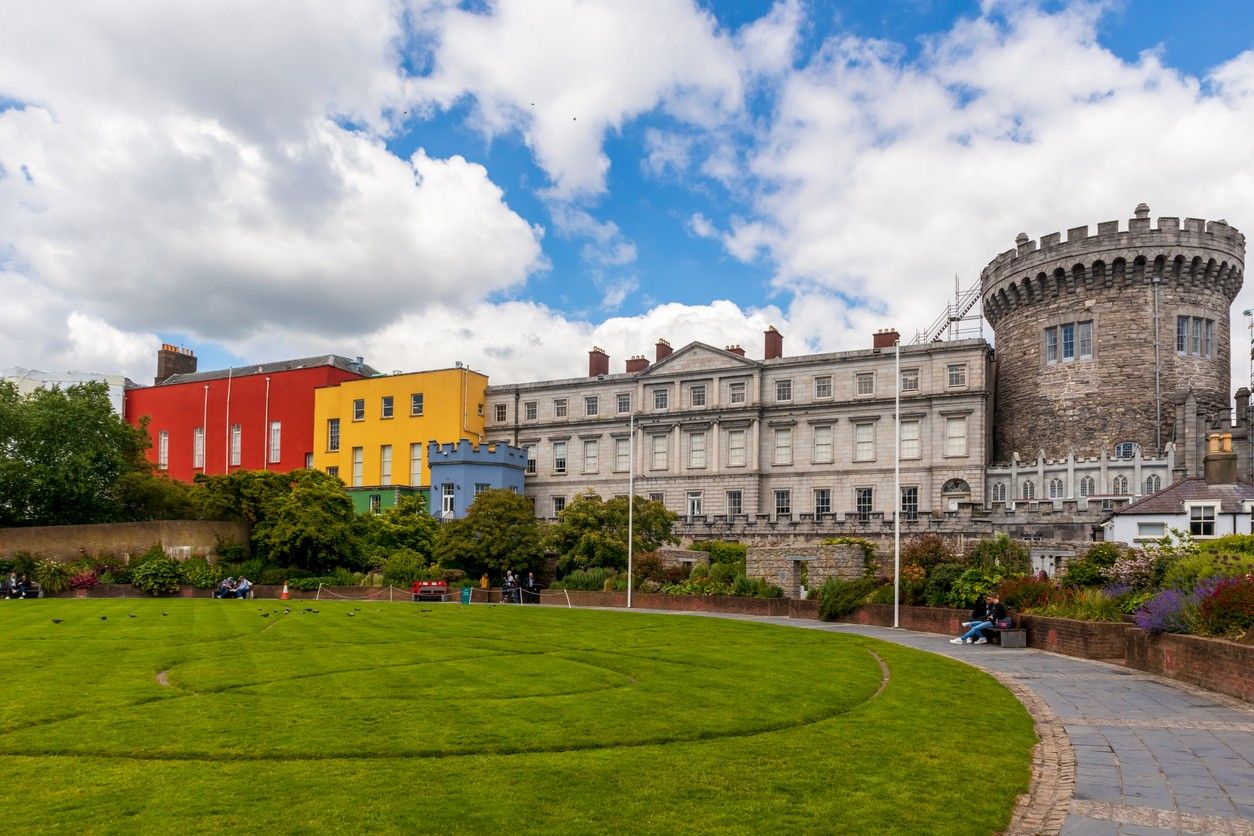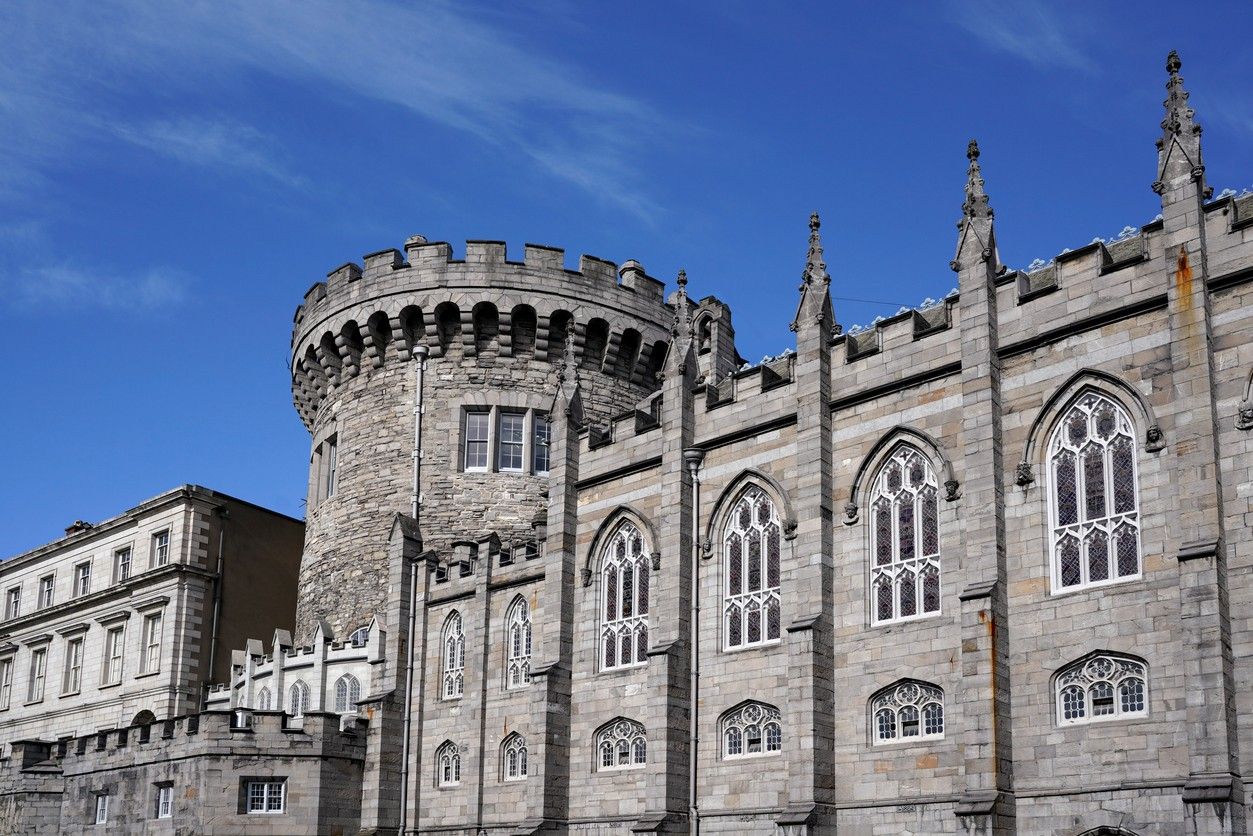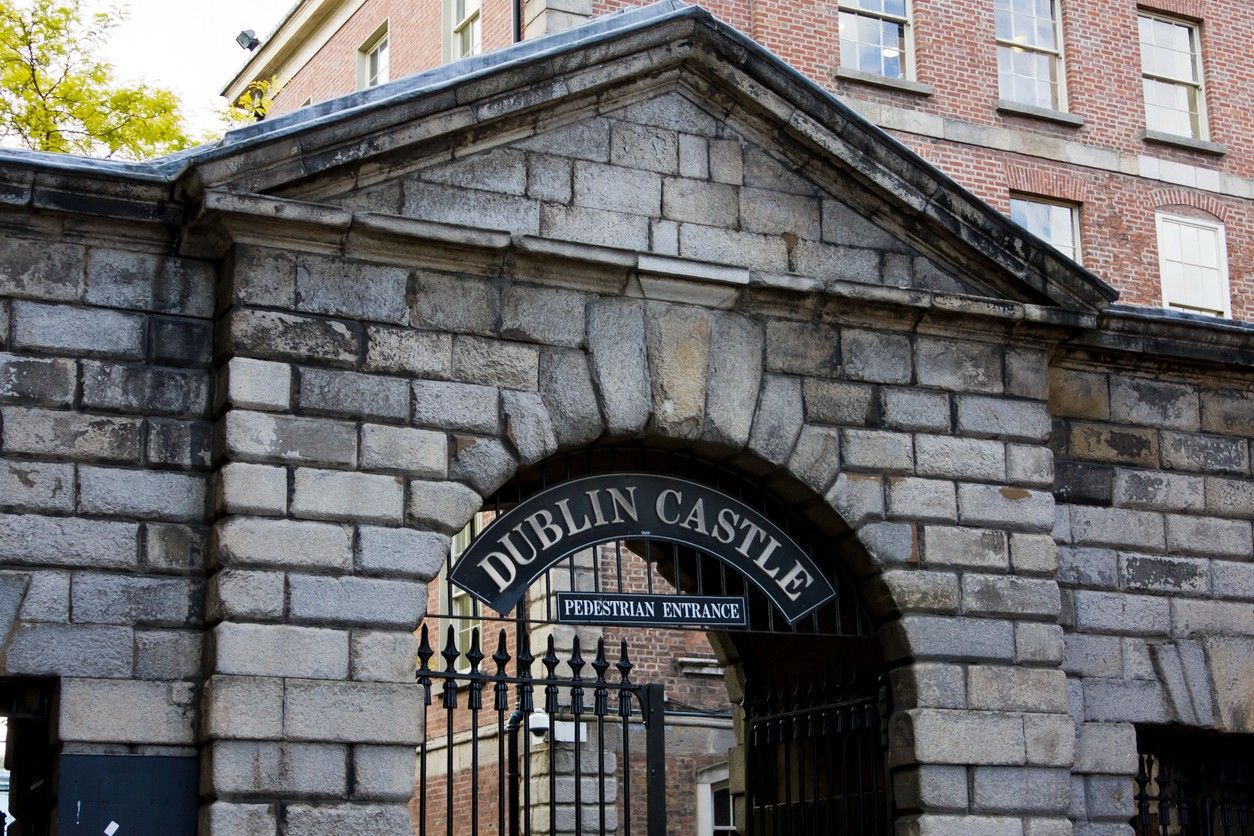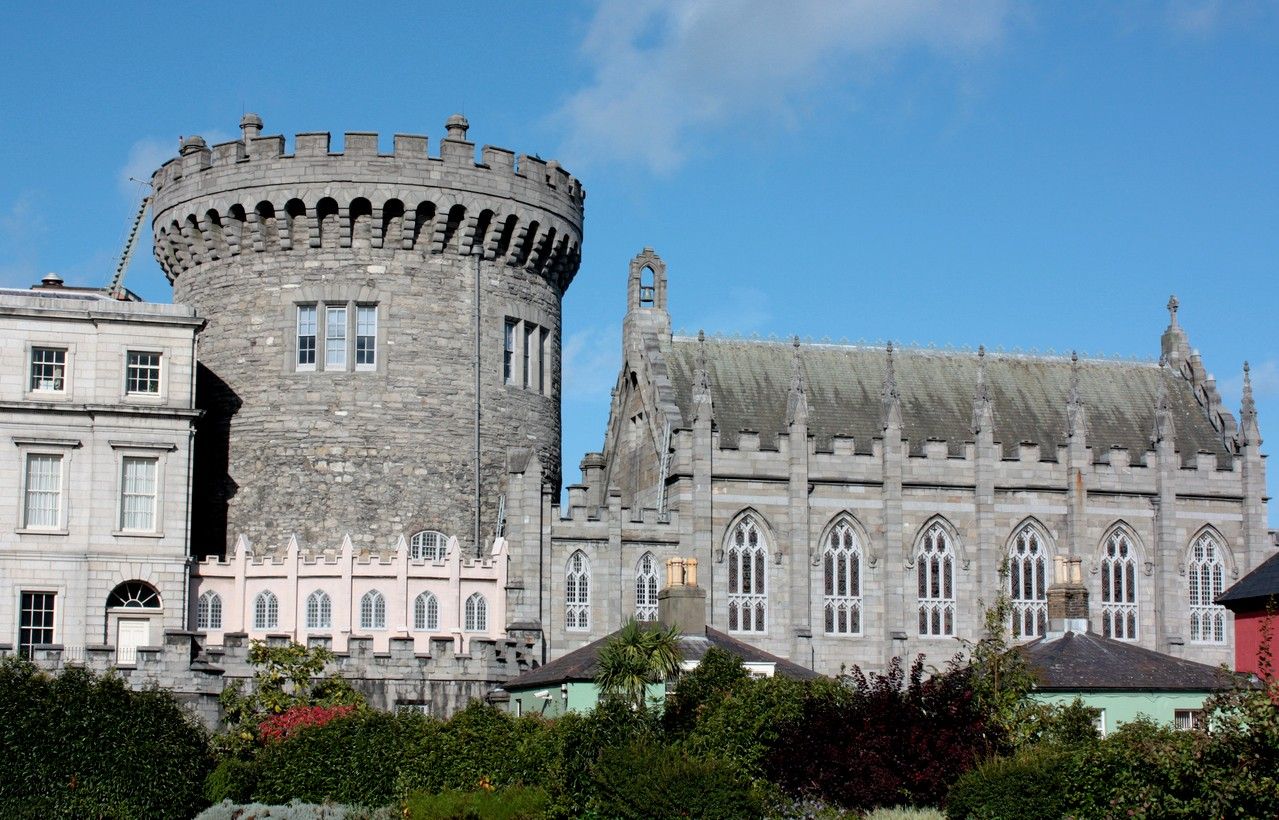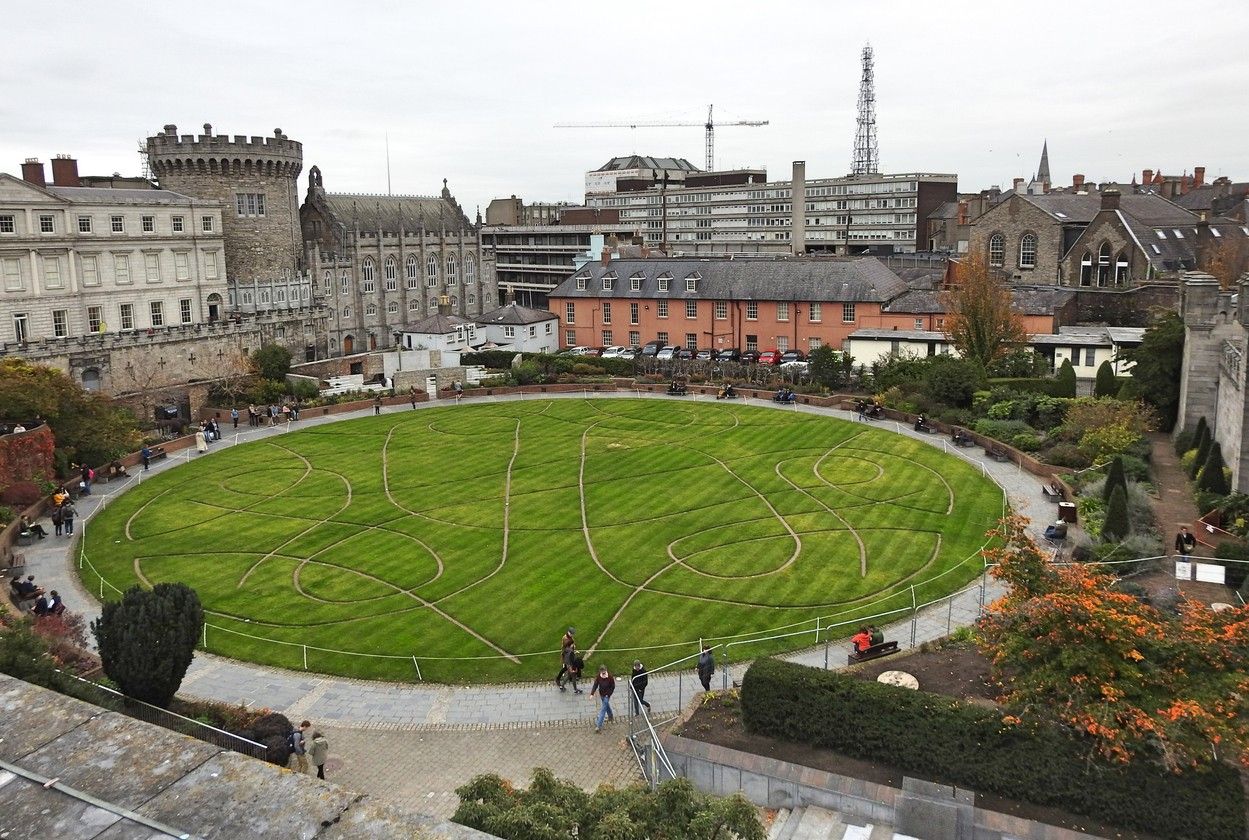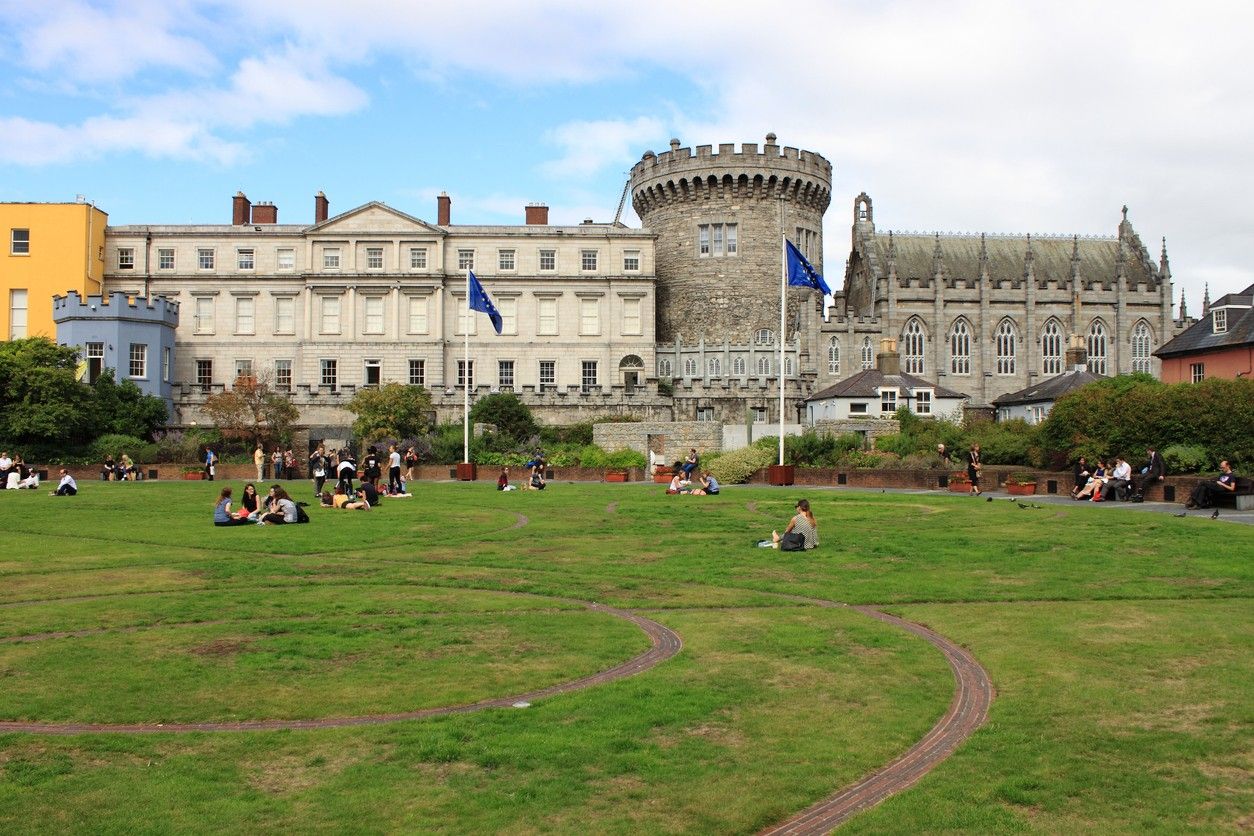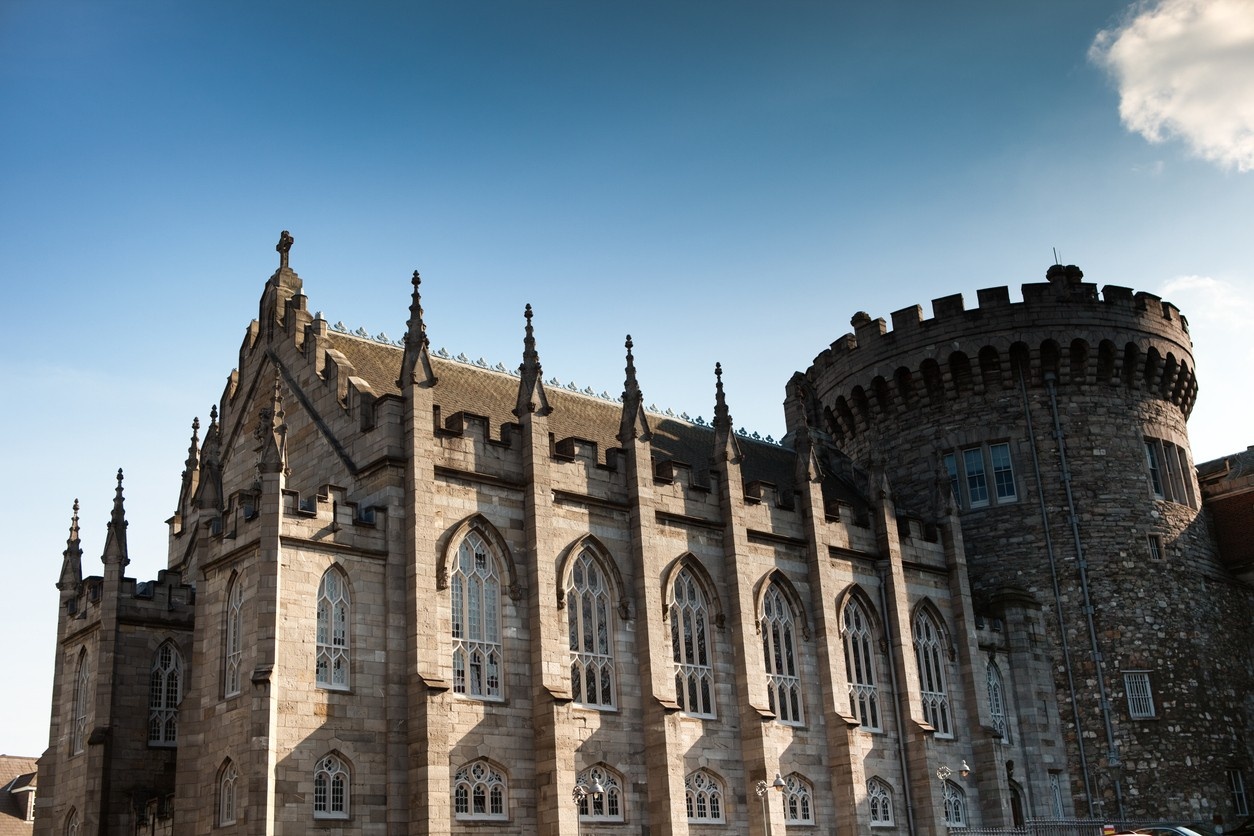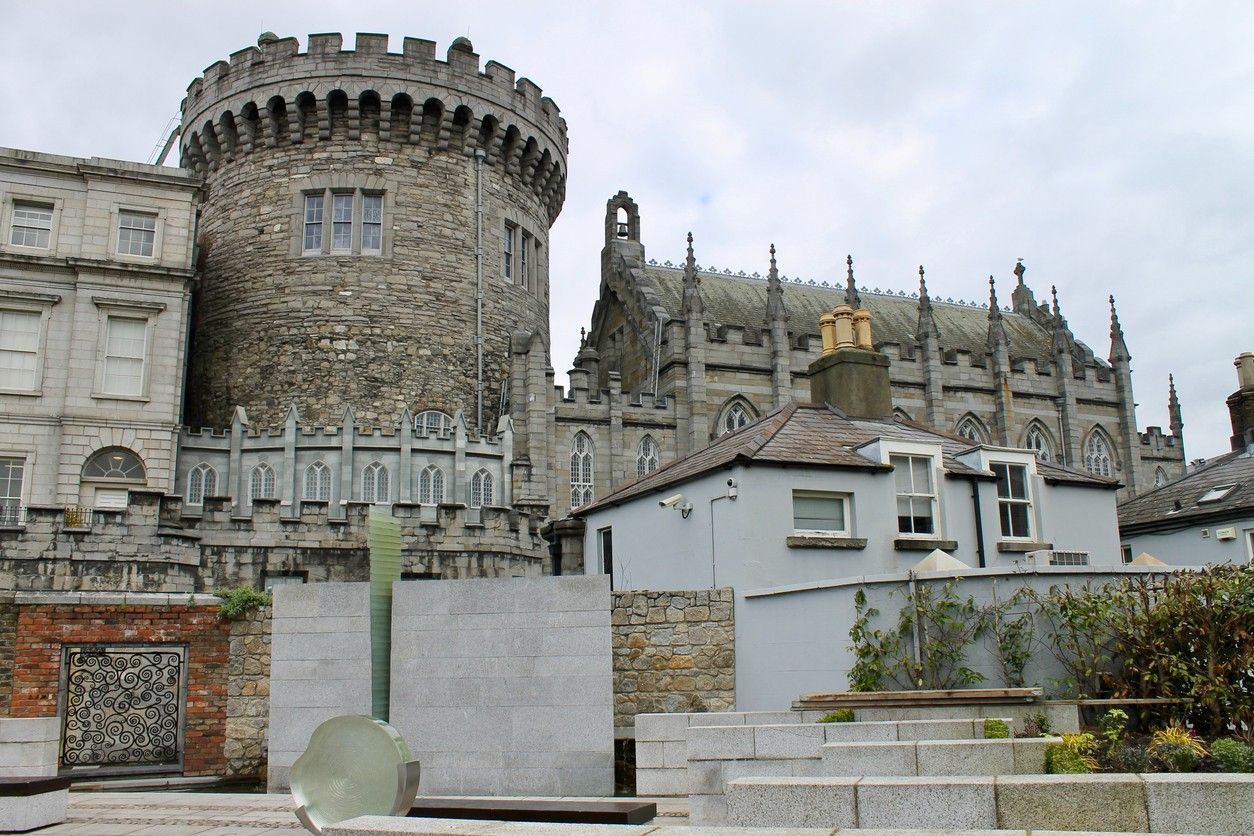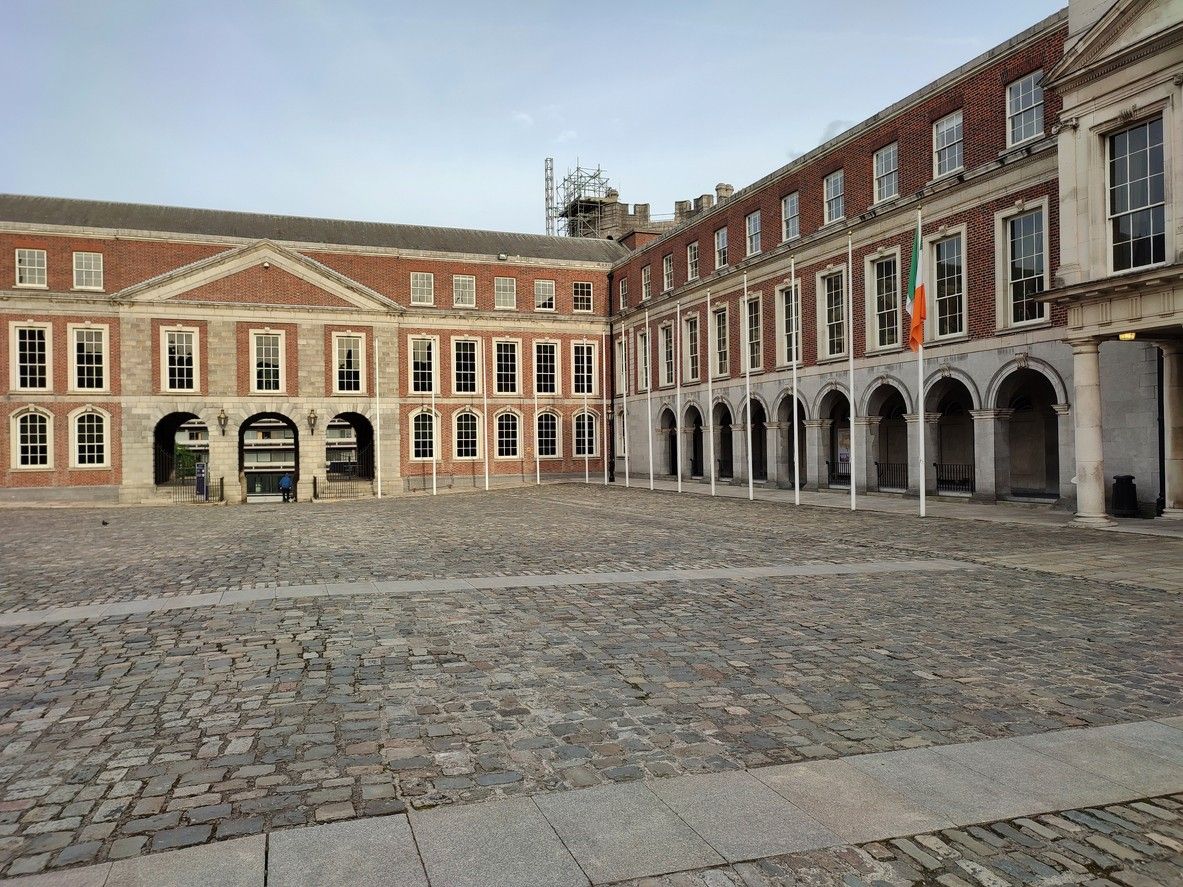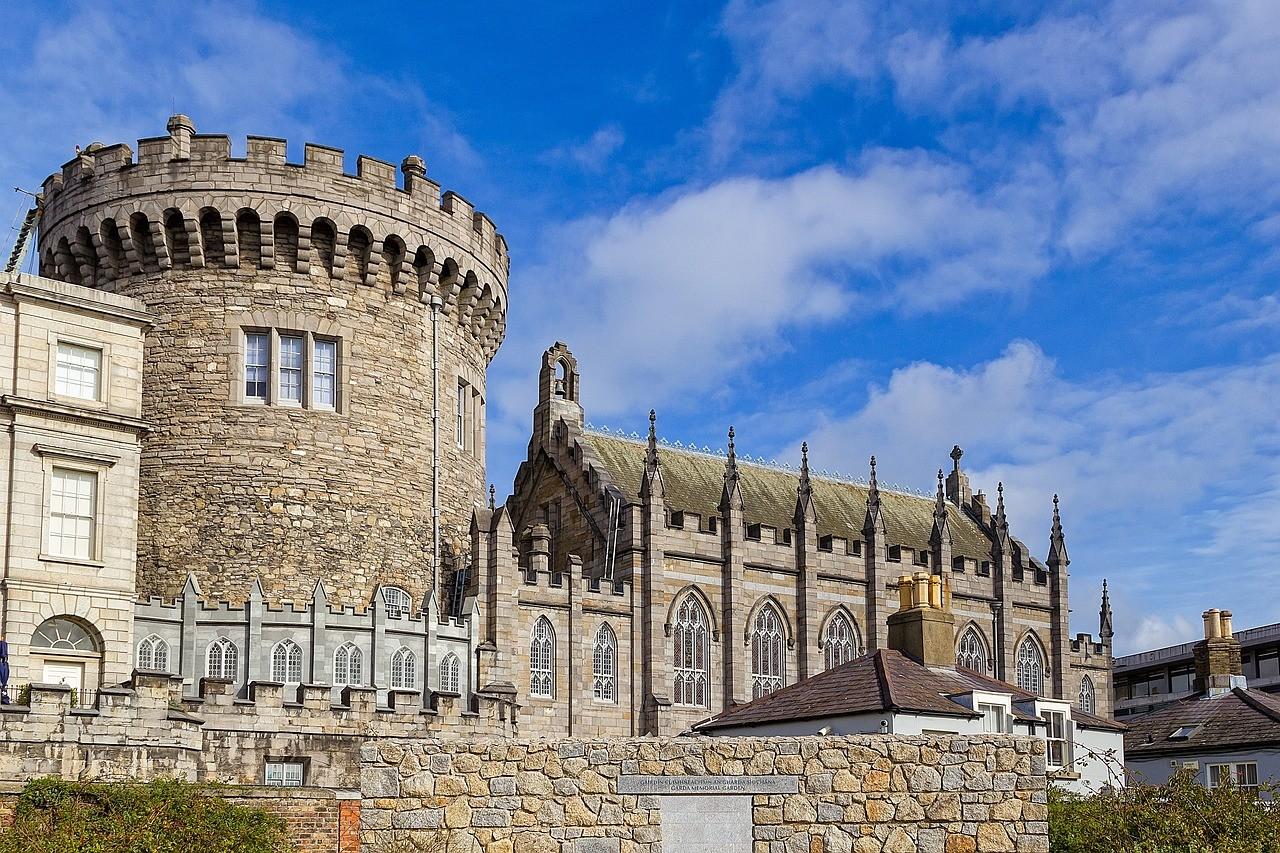Dublin Castle is a renowned historical landmark situated in the heart of Ireland's capital city. This iconic structure has borne witness to centuries of Irish history, serving as the seat of British rule in the country for over 700 years. Today, it stands as a testament to the resilience and cultural richness of the Irish people, attracting visitors from around the world who come to marvel at its architectural splendour and immerse themselves in its captivating past.
The History of Dublin Castle
The origins of Dublin Castle can be traced back to the arrival of the Normans in Ireland in the 12th century. In 1204, King John of England ordered the construction of a fortified castle on the site to serve as the administrative centre of the English administration in Ireland. Over the centuries, Dublin Castle has played a significant role in the country's history, witnessing numerous sieges, political upheavals, and momentous events. During the 16th and 17th centuries, Dublin Castle became the seat of the Protestant Ascendancy, a ruling class of Anglo-Irish landowners and administrators. This period saw the construction of several prominent buildings within the castle complex, including the Chapel Royal and the Chester Beatty Library, which now houses a world-renowned collection of rare books, manuscripts, and artefacts. In the 18th and 19th centuries, Dublin Castle continued to serve as the centre of British administration in Ireland, with the Viceroy of Ireland residing within its walls. It was during this time that the iconic Dublin Castle complex was further expanded and renovated, with the addition of the State Apartments and the magnificent Gothic revival architecture that can be seen today. The 20th century marked a significant turning point in the history of Dublin Castle. In 1922, the castle was handed over to the newly formed Irish Free State, signalling the end of British rule in Ireland. Today, Dublin Castle serves as a symbol of Irish independence and national pride, with various government offices and cultural institutions housed within its walls.
Exploring the Dublin Castle Complex
The Dublin Castle complex is a sprawling and multifaceted site, encompassing a variety of architectural styles and historical elements. Visitors can explore the various buildings and gardens that make up this iconic landmark, each with its own unique story and significance.
The State Apartments
The Dublin Castle State Apartments are undoubtedly the highlight of any visit to this historic landmark. These lavishly decorated rooms were once used for official state functions and ceremonies, and they now serve as a window into the grandeur and opulence of Ireland's past. The State Apartments are divided into several distinct areas, each with its own unique character and historical significance. Visitors can explore these magnificent rooms and immerse themselves in the rich tapestry of Irish history.
St. Patrick's Hall — The magnificent St. Patrick's Hall is the centrepiece of the State Apartments, and it is a true testament to the architectural prowess of the castle's builders. This grand hall, with its stunning vaulted ceiling and ornate chandeliers, was once the site of lavish royal receptions and state banquets. The hall's impressive size and ornate decoration were designed to awe and impress visitors, showcasing the power and prestige of the British monarchy's rule in Ireland. Visitors can imagine the grand events that once took place within these walls, with dignitaries and nobility from across Europe gathering to celebrate and negotiate. Today, St. Patrick's Hall continues to be used for special events and ceremonies, serving as a reminder of the castle's enduring significance in the history of Ireland and the United Kingdom.
The Throne Room — The Throne Room is another must-see within the State Apartments, as it was once the site of royal receptions and coronations. This majestic chamber is adorned with ornate furnishings and intricate tapestries, all of which contribute to its sense of grandeur and importance At the centre of the room stands the throne, a symbol of the British monarch's power and authority in Ireland. Visitors can stand in the presence of this iconic seat of power and imagine the historical events that unfolded here, as Irish and British leaders alike made decisions that would shape the course of the nation. The Throne Room is a testament to the complex and often contentious relationship between Ireland and the United Kingdom, and it serves as a poignant reminder of the country's long and turbulent history.
The Drawing Room — The Drawing Room, with its elegant furnishings and delicate decor, was once a space for more intimate gatherings and private conversations. Visitors can imagine the castle's occupants relaxing and entertaining guests in this refined and sophisticated setting.
Tapestry Room — The Tapestry Room, on the other hand, is a true feast for the eyes. Adorned with stunning tapestries that depict scenes from Irish and European history, this room showcases the incredible artistry and craftsmanship that was once valued by the castle's elite residents.
The Chapel Royal
The Dublin Castle Chapel Royal is a beautiful and historic place of worship that has stood within the castle walls for centuries. Constructed in the late 13th century, the chapel is a fine example of Gothic architecture, with its soaring ceilings, intricate stained glass windows, and ornate stone carvings. The Chapel Royal's history is closely intertwined with the broader story of Dublin Castle and the role it has played in the political and religious life of Ireland. Over the years, this sacred space has served as the private place of worship for the British monarch's representative in Ireland, the Lord Lieutenant.
The chapel's altar and liturgical furnishings are also of great historical significance, having been used in religious ceremonies and rituals that were central to the power and authority of the British administration in Ireland. Visitors can imagine the solemn and sacred atmosphere that would have pervaded the chapel during these important events. Today, the Dublin Castle Chapel Royal continues to be used for religious services and special events, offering visitors a serene and sacred respite from the bustling city outside. Its enduring presence within the castle complex serves as a poignant reminder of the complex and often fraught relationship between religion, politics, and power in the history of Ireland.
The Chester Beatty Library
Housed within the Dublin Castle complex, the Chester Beatty Library is a world-renowned institution that showcases an impressive collection of rare books, manuscripts, and artefacts from around the globe. Established by the philanthropist Sir Alfred Chester Beatty, the library is a true treasure trove of cultural and historical treasures. Visitors to the Chester Beatty Library can explore a wide range of exhibits, each of which offers a unique glimpse into the rich tapestry of human creativity and expression. From ancient Egyptian papyri to stunning illuminated manuscripts from the Middle Ages, the library's collection is a testament to the enduring power of the written word and the artistic genius of cultures from across the world.
One of the library's most prized possessions is its collection of religious texts, which includes rare and valuable examples of sacred scriptures from a diverse array of faiths, including Christianity, Islam, Judaism, and Buddhism. These manuscripts, some of which date back thousands of years, provide visitors with a profound understanding of the role that religion has played in shaping the course of human history. In addition to its impressive collection of books and manuscripts, the Chester Beatty Library also houses a vast array of Asian art, including Chinese and Japanese scrolls, calligraphy, and ceramics. These artefacts offer visitors a window into the rich cultural traditions of some of the world's most ancient civilisations, and they serve as a testament to the global reach and influence of Ireland's intellectual and artistic heritage.
The Gardens and Grounds
The Dublin Castle complex is not just about the impressive buildings; it also boasts beautifully manicured gardens and expansive grounds that offer a peaceful respite from the bustling city. Visitors can stroll through the Castle's idyllic gardens, admiring the vibrant flowerbeds, lush greenery, and serene water features.
The Dubh Linn Gardens
One of the highlights of the Dublin Castle Gardens is the Dubh Linn Gardens, situated on the site of the original Viking settlement that gave Dublin its name. These tranquil gardens offer visitors a chance to connect with the city's rich history, with informative plaques and interpretive displays providing insights into the area's past. The Dubh Linn Gardens feature a serene pond, surrounded by lush greenery and tranquil pathways. Visitors can stroll along the meandering walkways, taking in the sights and sounds of nature, and imagining the bustling Viking settlement that once occupied this space. The gardens also include a bronze sculpture, "The Taming of the Shrew," which pays homage to the city's Shakespearean heritage and the enduring influence of the Bard's works on Irish culture.
The Chester Beatty Gardens
The castle's grounds also include the Chester Beatty Gardens, a beautiful and secluded oasis that showcases a diverse range of plant life from around the world. Visitors can wander through these serene gardens, taking in the sights and sounds of nature and enjoying a moment of tranquillity amidst the bustling city. The Chester Beatty Gardens feature a stunning array of flora, including vibrant flower beds, lush shrubs, and towering trees. Visitors can explore the various themed areas of the gardens, such as the Asian-inspired section or the Mediterranean-style terraces, each offering a unique and captivating glimpse into the global horticultural heritage. In addition to the gardens' natural beauty, the Chester Beatty Gardens also feature several sculptures and architectural features that add to the site's cultural and historical significance. These elements, such as the intricate stone walls and ornamental fountains, create a harmonious blend of nature and human artistry that is truly awe-inspiring.
Dublin Castle as a Cultural Hub
In addition to its rich historical significance, Dublin Castle has also emerged as a vibrant cultural hub, hosting a variety of events, exhibitions, and performances throughout the year.
Festivals and Events
Dublin Castle is a popular venue for many of the city's most celebrated festivals and events. The annual St. Patrick's Day celebrations, for instance, often include performances and activities within the castle grounds, allowing visitors to immerse themselves in the festive spirit of Ireland's national holiday. The castle also plays host to various cultural festivals, such as the Dublin Theatre Festival and the Dublin Film Festival, providing a stunning backdrop for the city's thriving arts and entertainment scene. These events offer visitors a unique opportunity to experience the cultural richness of Ireland while exploring the historic halls and courtyards of Dublin Castle. See below all events through the year:
St. Patrick's Day Celebrations — Held annually on March 17th, the St. Patrick's Day festivities at Dublin Castle feature a range of performances, activities, and events that celebrate Ireland's national holiday.
Dublin Theatre Festival — This prestigious festival, held each autumn, brings world-class theatre productions to the stages of Dublin Castle and other venues across the city.
Dublin Film Festival — Held in late February/early March, the Dublin Film Festival showcases a diverse selection of international and Irish cinema within the historic setting of Dublin Castle.
Dublin Writers Festival — This celebration of literature and the written word takes place in May and features readings, panel discussions, and workshops held in the castle's grand halls and gardens.
Dublin Castle Summer Music Series — Throughout the summer months, the castle's grounds come alive with a series of outdoor concerts and musical performances.
Dublin Castle Christmas Market — The castle complex is transformed into a festive winter wonderland during the annual Christmas market, held in December and offering a unique shopping and dining experience.
Dublin Dance Festival — Held in May, this festival brings together world-renowned choreographers and dance companies for performances and workshops at Dublin Castle and other venues.
Dublin Castle Medieval Festival — Transporting visitors back in time, this lively festival celebrates the castle's medieval heritage with period-accurate re-enactments, crafts, and entertainment.
Exhibitions and Displays
Dublin Castle is home to a diverse range of exhibitions and displays that showcase the country's rich cultural heritage and artistic achievements. The State Apartments, for instance, often host temporary exhibitions that highlight important aspects of Irish history, art, and design. In addition, the Chester Beatty Library within the castle complex regularly rotates its exhibits, providing visitors with a constantly evolving array of rare and valuable artefacts from around the world. These exhibitions offer a fascinating glimpse into the global reach and cultural influence of Ireland's artistic and intellectual traditions.
Temporary Exhibitions in the State Apartments — The lavishly decorated State Apartments of Dublin Castle regularly host temporary exhibitions that showcase important aspects of Irish history, art, and design.
Permanent Exhibits at the Chester Beatty Library — Located within the Dublin Castle complex, the Chester Beatty Library houses a constantly rotating collection of rare books, manuscripts, and artefacts from around the world.
"Ireland's Military Story" Exhibition — This comprehensive exhibition, located in the castle's underground War Memorial Gardens, explores Ireland's rich military history and the role of the Irish in various conflicts.
"The State Apartments — Masterpieces of Georgian Architecture": This ongoing exhibit in the State Apartments provides visitors with an in-depth look at the architectural and historical significance of these grand rooms.
"The Viking Roots of Dublin" — Situated in the Dubh Linn Gardens, this interactive display delves into the city's Viking origins and the archaeological discoveries made on the castle grounds.
"Treasures from the Chester Beatty Collection" — Highlighting some of the library's most prized possessions, this rotating exhibit showcases the diversity and cultural importance of the Chester Beatty's holdings.
"Women in Irish History" — This temporary exhibition, held in the State Apartments, celebrates the contributions and achievements of remarkable Irish women throughout history.
"Exploring the Castle's Archives" — Offering a glimpse into the castle's rich documentary heritage, this exhibit features a selection of rare historical documents and records from the Dublin Castle archives.
Educational Programs
Dublin Castle is not just a tourist destination; it also serves as an important educational resource for both locals and visitors alike. The castle's educational programs and guided tours offer in-depth insights into the site's history, architecture, and cultural significance, allowing visitors to deepen their understanding and appreciation of Ireland's past. The castle's educational offerings include school tours, workshops, and lecture series, catering to a wide range of ages and interests. These programs provide an engaging and interactive way for visitors to explore the complex and multifaceted history of Dublin Castle, and to better understand its enduring legacy within the Irish national consciousness.
Accommodations near Dublin Castle
For those looking to extend their stay and immerse themselves in the rich history and culture of Dublin Castle, the city of Dublin offers a wide range of accommodations to suit every taste and budget.
Clontarf Castle Hotel — A historic 12th-century castle located just a short distance from Dublin Castle, the Clontarf Castle Hotel offers luxurious accommodations and amenities in a stunning, fully restored castle setting.
Fitzpatrick Castle Hotel — Situated in the picturesque coastal town of Killiney, County Dublin, the Fitzpatrick Castle Hotel is a magnificent 18th-century castle that provides guests with breathtaking views of the Irish Sea and Wicklow Mountains.
Malahide Castle & Gardens — In the charming town of Malahide, just north of Dublin, visitors can enjoy a stay at the Malahide Castle estate, which includes a range of self-catering accommodations and a luxury on-site hotel.
Staycity Aparthotels Dublin Castle — For a more contemporary and urban experience, Staycity Aparthotels Dublin Castle provides convenient and comfortable apartment-style accommodations just a short walk from the Dublin Castle complex.
Powerscourt Hotel Resort & Spa — Located in the picturesque Wicklow Mountains, the Powerscourt Hotel Resort & Spa offers a luxurious castle-inspired retreat just a short drive from Dublin Castle and the city centre.
Ashford Castle — Situated on the shores of Lough Corrib in County Mayo, the magnificent Ashford Castle is one of Ireland's most prestigious and historic hotel properties, offering guests a truly regal experience.
Ballynahinch Castle Hotel — This 700-year-old castle hotel in Connemara, County Galway, provides visitors with a peaceful and secluded escape, surrounded by the breathtaking natural beauty of the Irish countryside.
Dromoland Castle — The grand Dromoland Castle, located in County Clare, is a stunning example of 16th-century architecture and provides guests with a world-class luxury hotel experience.
Getting to and Around Dublin Castle
Dublin Castle is located in the heart of the city, making it easily accessible to visitors from both near and far.
Transportation — The castle is well-connected to Dublin's extensive public transportation network, with several bus and tram (known as the Luas) stops located in the immediate vicinity. Visitors can also opt for a scenic walk from nearby landmarks, such as the iconic Christ Church Cathedral, allowing them to soak in the city's vibrant atmosphere. For those arriving by car, there are several parking options available near Dublin Castle, including the Castle Car Park and the numerous pay-and-display lots scattered throughout the city centre.
Guided Tours and Audio Guides — To make the most of their visit to Dublin Castle, visitors can choose from a variety of guided tours and audio guides that provide in-depth information and insights into the site's history and significance. Guided tours, led by local experts, offer a comprehensive and immersive experience, allowing visitors to explore the castle's various buildings and grounds while learning about its fascinating past. Alternatively, self-guided audio tours provide visitors with the flexibility to explore the castle at their own pace, with informative commentary that brings the site's history to life.
Dublin Castle is a must-visit destination for anyone seeking to immerse themselves in the rich history and cultural heritage of Ireland. From its impressive architecture and stunning gardens to its vibrant cultural programming and diverse dining options, this iconic landmark offers a truly unforgettable experience for visitors of all ages and interests. So, plan your visit to Dublin Castle today, and discover for yourself the magic and wonder of this truly exceptional Irish landmark.
Related Articles

Let us know you agree to cookies
We use marketing, analytical and functional cookies as well as similar technologies to give you the best experience. Third parties, including social media platforms, often place tracking cookies on our site to show you personalised adverts outside of our website.
We store your cookie preferences for two years and you can edit your preferences via ‘manage cookies’ or through the cookie policy at the bottom of every page. For more information, please see our cookie policy.
